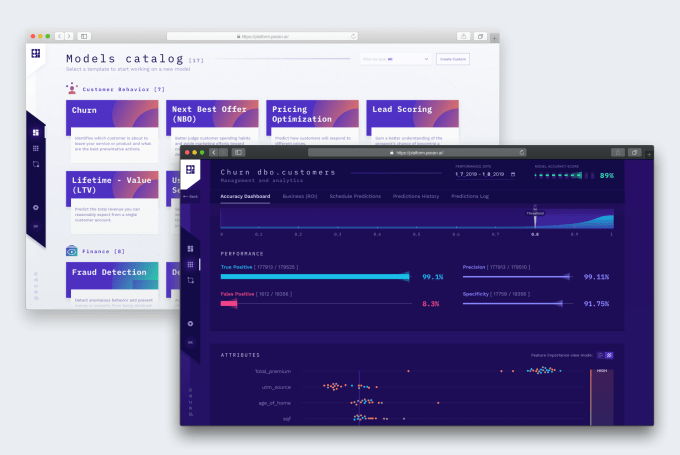Pecan.ai, a startup that wants to help business analysts build machine learning models in an automated fashion, emerged from stealth today and announced an $11 million Series A.
The round was led by Dell Technologies Capital and S Capital. Along with a previously unannounced $4 million seed round, the company has raised a total of $15 million.
CEO Zohar Bronfman says he and co-founder Noam Brezis, whom he has known for more than a decade, started the company with the goal of building an automated machine learning platform. They observed that much of the work involved in building machine learning models is about getting data in a form that the algorithm can consume, something they’ve automated in Pecan.
“The innovative thing about Pecan is that we do all of the data preparation and data, engineering, and data processing, and [complete the] various technical steps [for you],” Bronfman explained.
The target user is a business analyst using business intelligence and analytics tools, who wants to bring the power of machine learning to their data analysis, but lacks the skills to do it. “The business analyst knows the data very well, knows the business problem very well and speaks directly to the business owner of the problem — and they are currently conducting basic analytics,” he said.
Pecan includes a series of templates designed to answer common business questions. They divide these into two main categories. The first is customer questions like how much churn do we have, and the second is business operations questions related to things like risk or fraud. If the question doesn’t fall into one of these categories, it is possible to build your own template, but Bronfman says that is really for more advanced users.

Pecan template catalogue and screen pulling churn data from various data sources. Photo: Pecan.ai.
After you select the template and point to a data source such as a database, data lake or CRM repository, Pecan does the work of connecting to the source and pulling data into a dashboard. You can also export the algorithm for use in an external service or application, or Pecan can automatically update a data repository with data the algorithm is measuring such as churn rate.
The founders have been building this platform since 2016 when they founded the company, and have been working with beta customers for the last 18 months or so. Today, they emerge from stealth and bring Pecan to market in earnest.
Bronfman plans to move to New York City and open a sales and marketing office in the US, while Brezis will remain in Tel Aviv and oversee engineering. It’s early days for this startup, but with $11 million in capital, it has a chance to take the product to market and see what happens.
from TechCrunch https://ift.tt/36BR9ea
via IFTTT
Comments
Post a Comment